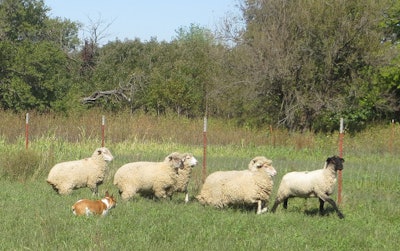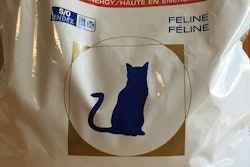
We know the data about pet food’s strength worldwide: the global pet food market reached US$75.25 billion in 2016, according to Euromonitor. The research firm projects growth to continue at least 2 percent a year, with higher increases for developing pet food markets and regions.
Yet data doesn’t tell the full story. We need powerful anecdotes and examples to flesh it out and help us anticipate the future of pet food. Here are five gleaned during the Pet Food R&D Showcase, held at October 10-12 at Kansas State University (KSU), followed by a visit to Canidae Farms in Cheney, Kansas, USA.
1. Pets universally loved and valued
Around the world, as the middle class grows, pets increasingly rank in importance – in fact, at nearly the same level as basic needs like food and shelter.
Kent Glasscock, president of KSU’s Institute for Commercialization, opened the showcase by talking about how the university partners with pet food and other companies, and how it came to pursue pet food as a program emphasis within its Department of Grain Science and Industry. In 2012, charged with expanding their work globally, Glasscock and his team conducted extensive research and realized they needed to focus on the impact of the rise of the middle class. That generated a question: As people around the world transition from lower economic levels to earning more and having more disposable income, what are they choosing to do with their increased purchasing power?
Universally, the research found, people choose three things: improving their nutrition (particularly buying and consuming more protein and meat), improving their shelter – and getting a pet, or better caring for their existing pets.
Think about that for a minute. It has profound and positive implications for our industry’s future.
2. Grains still have an important role in pet food
Despite the grain-free pet food craze, a full 80 percent of the total US pet food market is still comprised of conventional ingredients like grains.
Greg Aldrich, PhD, coordinator of KSU’s pet food program, as well as a longtime industry nutrition consultant and author of the Ingredient Insights column, led off the research portion of the showcase with that data from Packaged Facts. He also mentioned the growth of “value premium” products and how much of the increase in grain-free pet foods has come from new product launches, while actual volume and sales growth is slowing.
With the pet food market, like others, being cyclical, it’s worth considering what might come after the grain-free boom. Perhaps it’s ancient grains, which are very popular in human food – and we all know how closely pet food trends mimic those in human food. The showcase’s theme was ancient grains (it’s not a coincidence that Kansas is known for its grain crops such as sorghum), and Aldrich’s presentation focused on a study he and his students conducted on sorghum’s antioxidant and other beneficial properties.
3. The variety of grains matter for pet food and human food
Cereal crop diversity has the potential for improving human health, and the same opportunity exists for pet health, according to new research from KSU.
Humans, dogs and cats unfortunately share many of the same nutrition disorders, including obesity, heart disease and diabetes, said Davina Rhodes, PhD, assistant professor in the Department of Agronomy. Studies across many species have shown a connection between cereal grain intake and lower risk of obesity, which means also decreasing the risk of fat cells, higher levels of inflammation in those cells and, in some cases, insulin resistance. One factor seems to be the diversity of the cereal grains. Rhodes’ work has involved researching the many varieties of grains to find ones with the most beneficial nutrients and properties.
For example, the Crop Genebank holds 45,000 varieties of sorghum, Rhodes said. By studying their phenotypes and genotypes, she selected a subset of those, then narrowed it down further via cell and animal models to settle on two specialty varieties. Her work found very high levels of flavonoids, powerful phytonutrients with strong antioxidant and anti-inflammatory effects. In further work with seeds from the US Department of Agriculture, Rhodes discovered some varieties of sorghum have higher concentrations of flavonoids than ever found before. These hold promise for development into healthy ingredients for both human food and pet food.
4. New research on pet food safety
New research on the presence of pathogens in pet food and animal feed facilities shows the importance of cleaning different types of surfaces, according to Cassie Jones, PhD, assistant professor in KSU’s Department of Animal Sciences & Industry. Working with Aldrich, she and her students tested for several serotypes of Salmonella in the university’s feed and pet food labs. Some perhaps surprising findings included high levels of Salmonella on surfaces like concrete and rubber. Jones speculated that’s because those types of surfaces don't tend to be cleaned as often, as no one thinks to do so.
New data from a similar study conducted in swine feed mills showed that floors and the bottoms of workers’ shoes had the highest levels of Salmonella. All these findings have important implications for pet food safety: with facility design, you should pay attention to surface design and choices of materials. And hygiene protocols need to include regular cleaning of all surfaces.
In addition, Jones and her students tested different sanitizers on stainless steel surfaces and had surprisingly positive results with C6:C8:C10, a form of medium-chain fatty acids. She’s not sure why but is hoping to work with a pet food or feed manufacturer to do further testing.
5. Pet food transparency and ingredient sourcing
French Bulldogs can herd sheep. Well, I met one who thinks he can. Doink (named after former football announcer and coach John Madden’s favorite expression) lives at Canidae Farms with its owner, Clint Brauer. The sustainable farm is part of Brauer’s private enterprise, MG Honor Farms, named after his grandmother. Canidae contracted with him to grow some of the ingredients used in their pet foods, reaching 80 metric tons’ worth in 2016 and on track to hit 500 metric tons this year.
While watching Doink try to herd Brauer’s small flock of six sheep was amusing, the real takeaway from the visit was the company’s commitment to transparency with consumers, particularly in sourcing of its ingredients, and the way it is executing that strategy. My colleagues, Lindsay Beaton and Tim Wall, have already written in detail about the farm, Brauer’s and Canidae’s efforts, so I won’t repeat that information here. Suffice it to say that Canidae’s initiative may not make sense for every pet food company, but at least it should spur some ideas and questions to ponder.

















